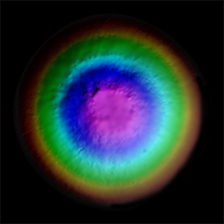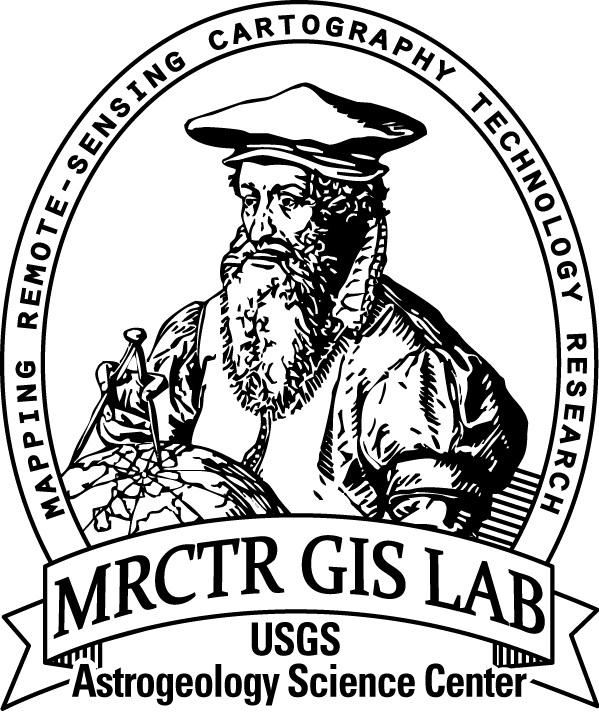Mars Mariner 9 5M Quads GIS Conversion
- Primary Authors
- USGS Astrogeology Science Center
- Originators
- Alex Huff, Marc Hunter
- Publisher
- USGS Astrogeology Science Center
- Abstract
- The 1:5,000,000-scale, Mariner-9 geological maps were the first to divide mars into 30 discrete latitudinal and longitudinal areas called the âMars Chartsâ (MCs) (Skinner et al., 2006, Gaither et al., 2015; Batson, 1973). These maps were chosen based upon this historical importance, as comparison of the first, Mariner 9-based MCs with modern mapping of Mars quadrangles is the clearest way to see how geologic planetary mapping has developed over time. In order to maintain historical accuracy, these maps were digitized instead of renovated. The MCs were georeferenced to the Mars Odyssey Thermal Emission Imaging System (THEMIS) Daytime Infrared (IR) mosaic (100 m/pixel), but the mapperâs contact locations and unit interpretations were preserved as originally intended (Christensen et al., 2004). Future work to renovate the MCs would entail adjusting contact locations to where we would interpret the mapper to have placed it based on the THEMIS IR base map. Additionally, map units could be extrapolated or adjusted in order to be consistent across MC boundaries and ages could be applied to the geologic units. References: * Batson R. M. (1973) JGR, 78, 4424-4435. * Christensen P. R. et al. (2004) Space Sci. Rev., 110. * Skinner, J. A., Jr, T. M. Hare, and K. L. Tanaka 2006, LPSC XXXVII, abstract #2331. * Gaither T. A. et al. (2015) LPSC XLVI, Abstract #2522.
- Purpose
- To scan, spatially register, and convert hard-copy 1:5M Mariner 9 geologic maps into a GIS format.
Contact and Distribution
- Format
- Geologic Map, Vector Data
- Access Constraints
- None
- Access Scope
- MRCTR
- Use Constraints
- Public domain
- Supplemental Information
- http://www.hou.usra.edu/meetings/lpsc2016/pdf/2501.pdf
- Native Data Set Environment
- ESRI Arcinfo
- Astrogeology Theme
- Geographic Information System (GIS), Geology
- Temporal Keywords
- Amazonian, Hesperian, Noachian
- Mission Names
- Mariner 9
- Online Package Link
- https://astrogeology.usgs.gov/search/map/mars_mariner_9_5m_quads_gis_conversion
- External File Size
- 46235440
- Online File Link
- http://astropedia.astrogeology.usgs.gov/download/Mars/Geology/MarsMariner9_5MQuads_GIS_Conversion.zip
- Contact Address
- 2255 N. Gemini Drive
- Contact City
- Flagstaff
- Contact State
- AZ
- Contact Postal Code
- 86001
- Contact Email
- astroweb@usgs.gov
- Progress
- In Work
- Update Frequency
- As needed
- Logical Consistency
- Strict digitization of historical maps does not require any new interpretation of geologic features (as renovation does). However, there are subjective elements of the process that can affect the working consistency and preservation of the original mapping intent which must be identified and clearly documented, if not fully mitigated. The most common example of this is transition points between contact types where feature symbology cannot be differentiated.
- Completeness Report
- All maps have been digitized and assembled into their original MC Quads. The elements of the project were organized as a compressed (*.zip) package with four folders: (1) Data, containing the geodatabase (*.gdb) in both ArcMap 10.3 versions, layer files and any related GIS shapefiles such as quad boundaries; (2) Documents, with metadata, abstracts and supporting information; (3) Map Documents, containing projects (*.mxd) in 10.3 and 10.0 versions. A separate download contains the original source Maps which have been georeferenced (*.tiff).
- Process Description
- Contacts were digitized with at 1:200, 000 scale with a streaming tolerance of 500 map units, which were dissolved by contact type and planarized. Map units were built from contacts via Feature to Polygon tool, attributed with a coded domain created in the root of the geodatabase and symbolized with RGB values of source maps. For detailed information on the renovation process as applied to the global geologic map of Mars see the 2015 LPSC abstract by Skinner et al. www.lpi.usra.edu/meetings/lpsc2006/pdf/2331.pdf or Gaither et al. at www.hou.usra.edu/meetings/lpsc2015/pdf/2522.pdf It is this concept of scientific evolution over time that has driven the Planetary Geologic Mapping (PGM) community to generate a workflow with which printed historical maps can be imported into ArcGIS to produce GIS data sets for the community. Included in the download documentation is a workflow graph to describe the steps taken to register, create the empty geodatabase container, digitize, attribute and release these maps.
Lineage
- Process Date
- 2016-03-01
- Source Title
- Mars Mariner 9 5M-scale Geologic Maps
- Source Online Linkage
- http://pubs.er.usgs.gov/
- Attribute Accuracy Report
- Best Effort
Geospatial Information
- Target
- Mars
- System
- Mars
- Minimum Latitude
- -90
- Maximum Latitude
- 90
- Minimum Longitude
- -180
- Maximum Longitude
- 180
- Direct Spatial Reference Method
- Vector
- Object Type
- Grid Cell
- Quad System
- Mars 1:5M
- Quad Name
- Radius A
- 3396190
- Radius C
- 3396190
- Control Net
- MOLA
- Map Projection Name
- Simple Cylindrical
- Latitude Type
- Planetocentric
- Longitude Direction
- Positive East
- Longitude Domain
- -180 to 180



















